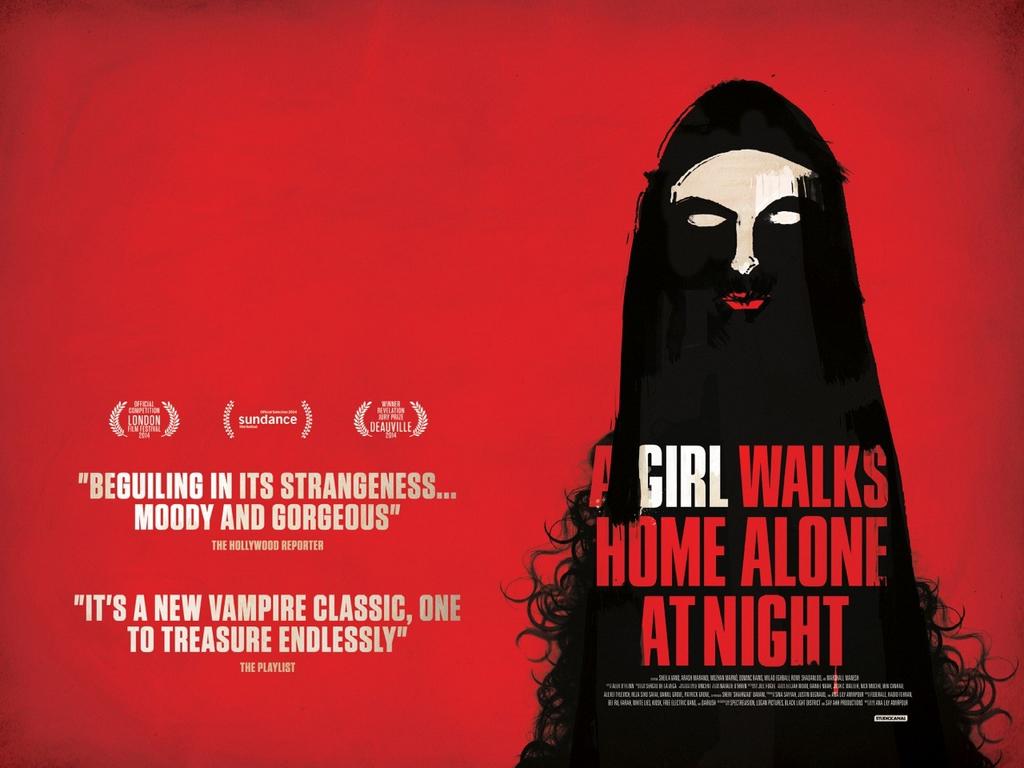Throughout
the history of cinema, many great actors have personified death on film. First time directory Ana Lily Amirpour gives audiences one of the best
of recent memory in her quasi-Spaghetti Western homage, if David Lynch and David
Cronenberg could have a daughter, this would be the film that she would direct.
A Girl Walks Home Alone At Night
takes its time to get to know the characters, unnerve its audience, and uses its
black and white color palette to get under the audience’s skin. Sheila Vand
plays a vampire closer to Bela Lugosi’s Dracula than today’s more charming take
on vampiric characters.
Taking
place in the fictional Iranian town of Bad City, the film follows Arash (played
by Arash Marandi) as he copes with his father’s drug addiction. Hossein
(Marshall Manesh), a once charming man, has been reduced to a hunched over heroin addict who heckles local prostitute Atti (Mozhan Marnó) and owes money
to Saeed (Dominic Raines), the local pimp. An unnamed girl (Vand) comes into
everyone’s lives, as sudden and mysterious as the shadows haunting the night.
Every
inch of frame is utilized across the film’s 99-minute runtime. Filmed in and
around Bakersfield and Taft, California, there is a beautiful shot where the
Girl is following Atti home against a white wall, patterned by pillars in the
façade of the building. This film features some of the best cinematography of
the past year, particularly in scenes in which the Girl seems to materialize
from nowhere or follows people around at night. Her black burqa-like shawl
enveloping her just like darkness does to the world come sundown.
If
Amirpour’s film is guilty of anything, it is being too sincere. The cast of
relative unknowns does wonders for the story, never once breaking the spell of
watching characters on screen as opposed to actors on screen. Sheila Vand’s
take on the vampiric Girl character is hypnotizing. Her quasi-hipster, punk,
goth, place of residence is clad with posters of bands and artists from the
80s. She has little dialogue, but a powerful presence on screen. The Girl is a
force. We never find out where she comes from, why she is in Bad City, or what
her ultimate fate is. She is there and the characters must accept and live with
her, much like the idea of mortality and death, something the film does
explore, particularly with the scenes between Arash and Hossein, as the
relationship between father and son ultimately dies.
The
film has a lot to say about the image of masculinity, giving us two sides of a
coin with Saeed the drug dealing pimp and Arash, the honest and hard working
boy who had to save up to buy the car of his dreams. Though ultimately
resistant to both, the Girl takes an eventual liking to Arash after she encounters
him (dressed as Count Dracula for that matter) one night after a party. His
curiosity is sparked, leading to many questions and an interest in her, beyond
her looks. Saeed on the other hand pulls out every masculine cliché possible in
one of the film’s most memorable and humorous moments. She keeps an eye over
the men in the town, particularly the bad ones. Be it a young boy with
questionable habits or drugged out Hossein’s decline from fatherhood. The Girl
serves as a summation of the dark side of humanity in naivety, loneliness,
temptation, and of course, death.
First
time directory Ana Lily Amirpour has made a film that will have you thinking
about it long after viewing it. Whether it is the Ennio Morricone influenced
score or the fact that the dialogue is in Persian. This film challenges its
audiences from the long opening scene to the sparse dialogue. In that respect, A Girl Walks Home Alone At Night has
more in common with the Italian Western films of Sergio Leone and Sergio
Corbucci than contemporary its contemporary sparkly vampire romance pictures.
Not easy to swallow, but an experience unlike any other horror film out last
year, do what you can to see this film.
A Girl Walks Home Alone At Night is now available on VOD, DVD & Blu-Ray, and Netflix Instant Stream.

